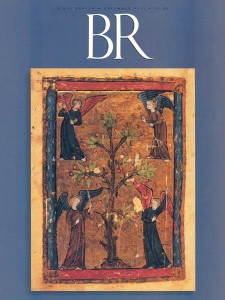The Bible
Stephen Prickett and Robert Barnes (Cambridge Univ. Press, 1991)
The heart of Prickett and Barnes’ approach to the Old and New Testaments (they insist that the two be considered together) can be best expressed in their own words: “… the Bible was from the first a palimpsest of languages and contexts.” In it one sees clearly the ongoing influence of various cultures and a continuous process of interpretation and reinterpretation.
The authors have packed a surprising amount of useful information about the Bible into 141 pages. They supply a survey of what is found in the books or sections of the two testaments, but their longest chapter summarizes biblical teachings on ten leading themes (including God, creation, covenant, purity and holiness, the kingdom of God and the Messiah, and wisdom). From the scriptural text they then move to interpretations of that text—a process that is evident, of course, already in the Bible itself.
Prickett and Barnes’ concise history of interpretation stretches from biblical times to the present; thus there are sections on literal and allegorical readings and on the sorts of exegesis practiced during the Reformation, the Enlightenment and in more recent times. The final chapter offers a fascinating study of “the Bible and literature”—from the early translations to the versions in modern languages, especially English. Here Prickett and Barnes center their attention on the Authorized Version (AV), commenting at one point: “If a camel is a horse designed by a committee, then the AV is the ultimate camel.”
Already a library member? Log in here.
Institution user? Log in with your IP address.

